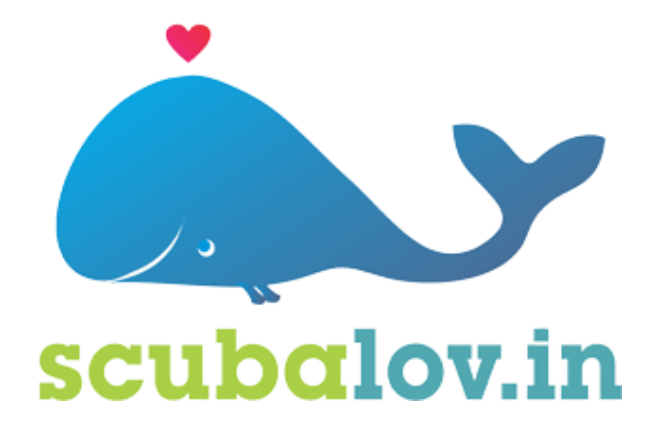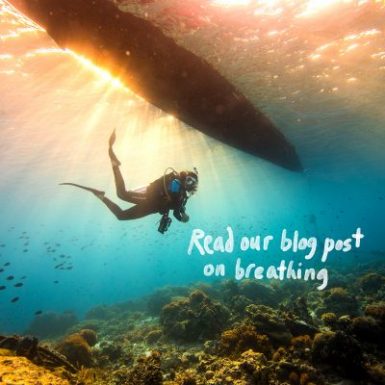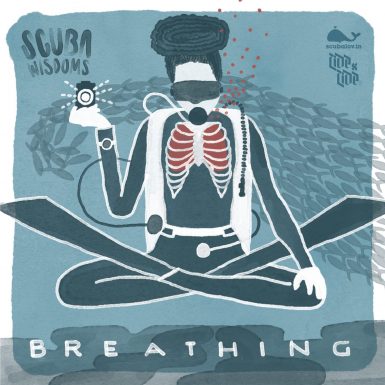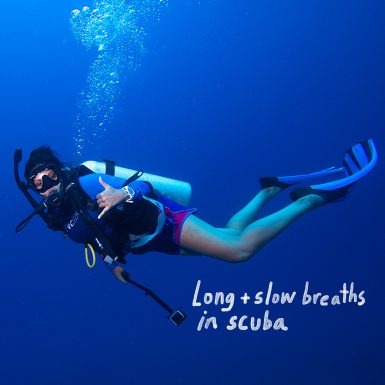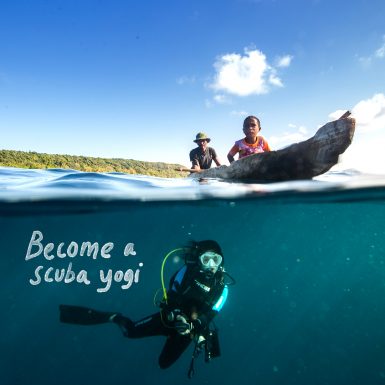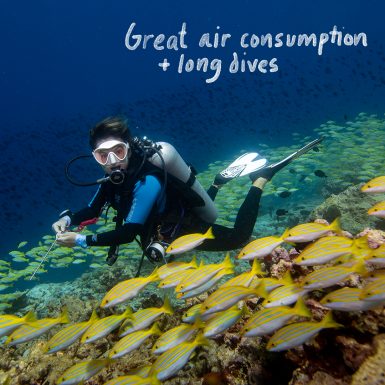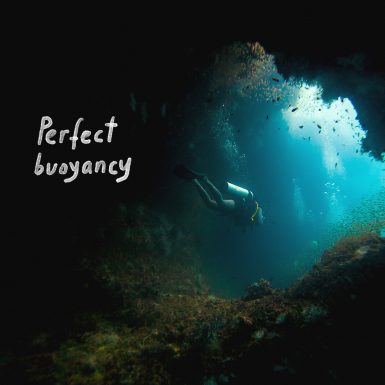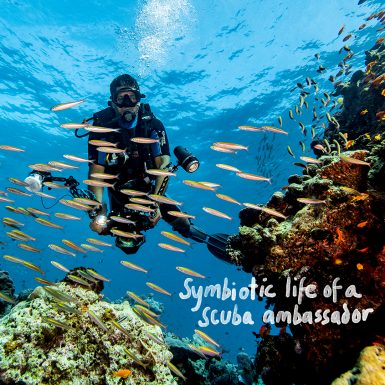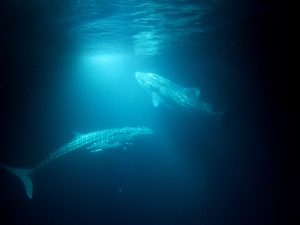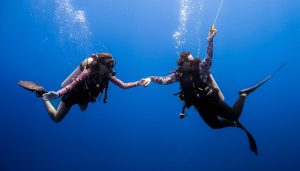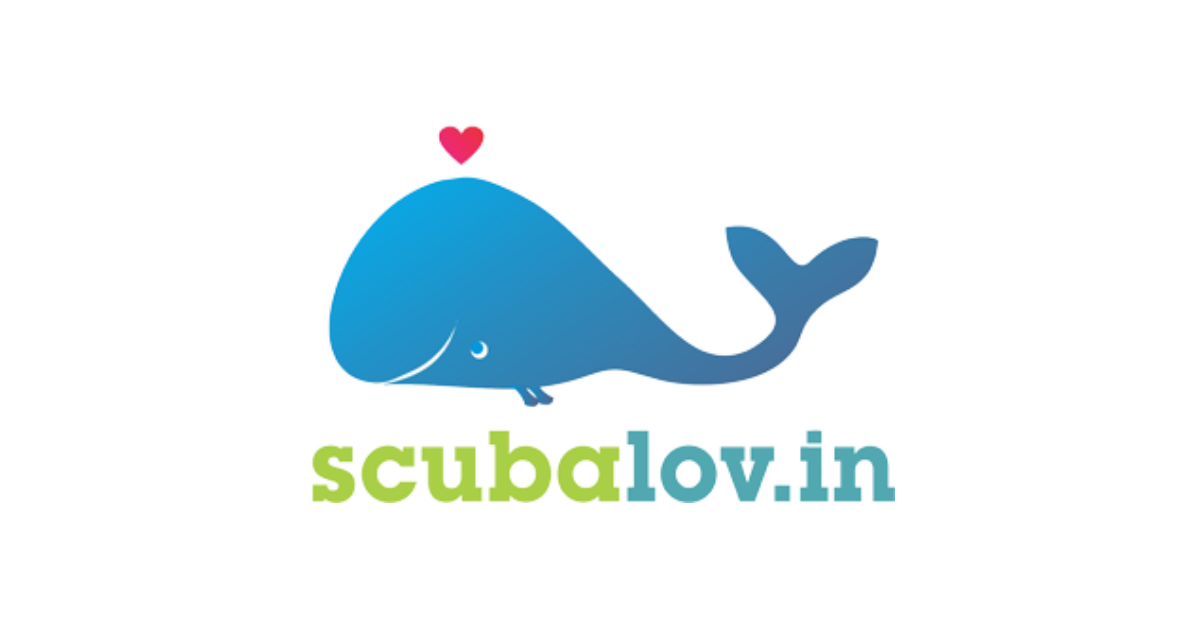10 SCUBA WISDOMS : IMPORTANCE OF BREATHING IN SCUBA
Where Buoyancy Control is like putting your car on the road, Breathing is very much the Fuel that Drives it.
Scuba Wisdom : Importance of Breathing in Scuba Diving Photo @anupjkat
Before you start any in-water dive as a Discover Scuba Diver or Open Water Student we always teach you the rules of breathing first. This is the most important step. As soon as you are comfortable with your breathing you have a platform to learn all other basics of scuba.
What are the 3 rules of breathing in Scuba Diving?
Rule 1 = Never hold your breath.
All divers know this. If you hold your breath, you can not breathe the air from your tank, neither will you be able to stay underwater to scuba dive.
Fast breathing will empty your tank quickly, so it’s actually not a good way to start your scuba class or dive.
More importantly it is also dangerous as it eventually can lead to panic reactions underwater. What we breathe in as air is Oxygen (O2) and Nitrogen (N2). N2 is an inert gas that accumulates in your body (we will discuss this in a separate N2 Management session later) during the dive, upon ascending and at the surface you will offgas the same N2. O2 however is used in your metabolism: you breathe in O2, and you breathe out Carbon Dioxide (CO2).
The actual gas exchange happens in your lungs ie you take in O2 and exchange it for CO2. Before (and after) this gas exchange the respective O2 (and CO2) travels through the dead airspaces like mouthpiece, mouth and other breathing passages.
When you breathe fast or shallow (we also call this hyperventilate), a lot of that CO2 is left behind in your dead airspaces upon breathing out. With the next breath in, you mostly get CO2, and not the fresh O2 from your scuba tank. Shallow breathing and a lack of O2 (or too much CO2) will eventually trigger your brain into a situation of “what the hell is going on, I don’t wanna be here”, and might make you wanna bolt to the surface. Rapid ascents are definitely something we want to avoid (same N2 Management Session will cover this) as they can again lead to lung overexpansion injuries (you might be holding your breath) or the bends (N2 bubble formation, more on this in the N2 Management Session).
So how do we breathe: we breathe deep and slow!
When you breathe in, breathe as if you are sipping a cup of tea very slowly; when breathing out, you softly blow a whistle. The point is to take your time to fill up your lungs and empty them out again: when you breathe in you sip, and when you breathe out, you whistle.
Long and slow breaths we take during SCUBA: breathe in as if you are sipping a cup of tea, breathe out with small bubbles Photo @anupjkat
So you complete long breaths without taking / releasing too much air at once! Such breathing technique allows you to breathe slowly and gradually, extend your breathing cycle, and slows down your breathing frequency.
Why is correct breathing so important or in other words what are the advantages of slow and deep breathing?
Advantage 1 = You Become a Scuba Yogi
When your breathing is at ease, you feel more relaxed, in control, aware and composed underwater. If you want to be like a fish, breathe like one and dive like one! As I explained before, fast breathing does not always set you in the right frame of mind.
Diving is very much like Yoga. In Yoga to come to a stillness of mind & connect with the divine, having no thoughts or distractions, and experience bliss and being, takes a lot of practise. Some even self isolate in a cave for a few years to achieve such divine space.
Correct breathing in Scuba turns you into a SCUBA Yogi fully connected with the underwater world and its surroundings Photo @anupjkat
With correct breathing in scuba diving you can get such stillness of mind on your first dive. That means no thoughts, no distractions, no monkey mind but a full oneness & being in the ocean with all marine life! This is the beauty of diving: be & experience, dive into the national geographic and become one!
Advantage 2 = Your Air Consumption will Improve
When you take slow and long breaths in and out, your breathing cycle will slow down, this in turn will improve your air consumption as you use less air over a certain time.
A nervous diver or first timer breathes fast (diver 1), it might take 2 seconds for one cycle of breathing (in – out), whereas a composed diver (diver 2) might take 5 seconds for one cycle of breathing. For ease of calculation we assume they take the same amount of air for every cycle. Diver 1 will take 30 breaths in one minute (60 sec / 2 sec/breath) whereas diver 2 will take 12 breaths in a minute (60 secs / 5sec/breath). That implies – keeping everything else (depth, lung capacity and amount of air per breath) as a constant – that diver 1 will use his air 2,5 times faster then diver 2). So if diver 2 has a 50 minute dive, diver 1 will only dive for 20 mins at his rate of breathing. 50 minutes is a nice dive, 20 minutes is really too short a dive to be worthwhile!
When your Air Consumption is great, you will spend much more time Underwater with the beautiful Fish and Coral Life Photo @anupjkat
If you want to stay long underwater, and make every penny count (as we all pay the same for a fun dive), you need to get your breathing under control to let your air last!
Advantage 3 = Your Buoyancy will Improve
If you have a slow and long breathing cycle it will allow you to remain at your depth much easier than when you are huffing and puffing underwater (or hyperventilating or fast breathing). If you breathe in a lot, you will go up; same for when you breathe out a lot, you will go down. Matter of fact is that you need to control your breathing to maintain your depth. Long & slow inhalations and exhalations have a prolonged & less profound effect on your buoyancy and will over time even each other out.
The Fine Tuning of your Buoyancy happens with your Breath and You will Have More Positional Control Underwater Photo @anupjkat
There is always a delay between the change in air you put in your jacket or lungs, and its impact on your buoyancy. If you gulp the air in at great quantity, and then immediately release it, there is much chance you will dive in a yo-yo profile. But when you breathe slowly and gradually both in and out, your profile becomes a more balanced one. Take the example of a 6 sec breathing cycle: 3 sec to breathe in and 3 sec to breathe out. Assume that there is a delay on your buoyancy change of 1 sec. What happens is that during the first 3 secs every sec you get 33% more air, the first 33% of air will only impact your buoyancy on sec 2, the next 33% of air on sec 3 etc. However as soon as you start breathing out again the first 33% is already offsetting your last 33% that you just breathed in! With a controlled breathing cycle you can much better manage your buoyancy as the impact of your breathing is controlled.
Your control of breathing will allow you to have a beautiful interaction with all marine life: by NOT damaging it (bad divers are not only dangerous to themselves but also the environment), and approaching and interacting with it in a SERENE way of CO-EXISTENCE. Moreover more experienced scuba divers would love to dive with you, as you maintain great diving etiquette, dive time and scuba practise.
Excellence in breathing allow for a perfect symbiosis with the coral, fish, other divers, and your camera. Photo @anupjkat
When you are at this controlled stage of diving, you not only are a role model diver for great photo opportunities, but are getting ready to take a camera in your own hands and start recording the underwater world yourself. The best underwater photographers and videographers are the ones who not only understand the technical aspects of photo/videography but also SCUBA in its most broad spectrum of application.
So where your buoyancy control put you as a diver on the road, your breathing is the fuel that drives it all! A controlled and comfortable way of breathing will set you in the right frame of mind, allows for a long dive, with great buoyancy control, and a beautiful interaction with the environment and other divers. It is essential you get this right from the beginning!
